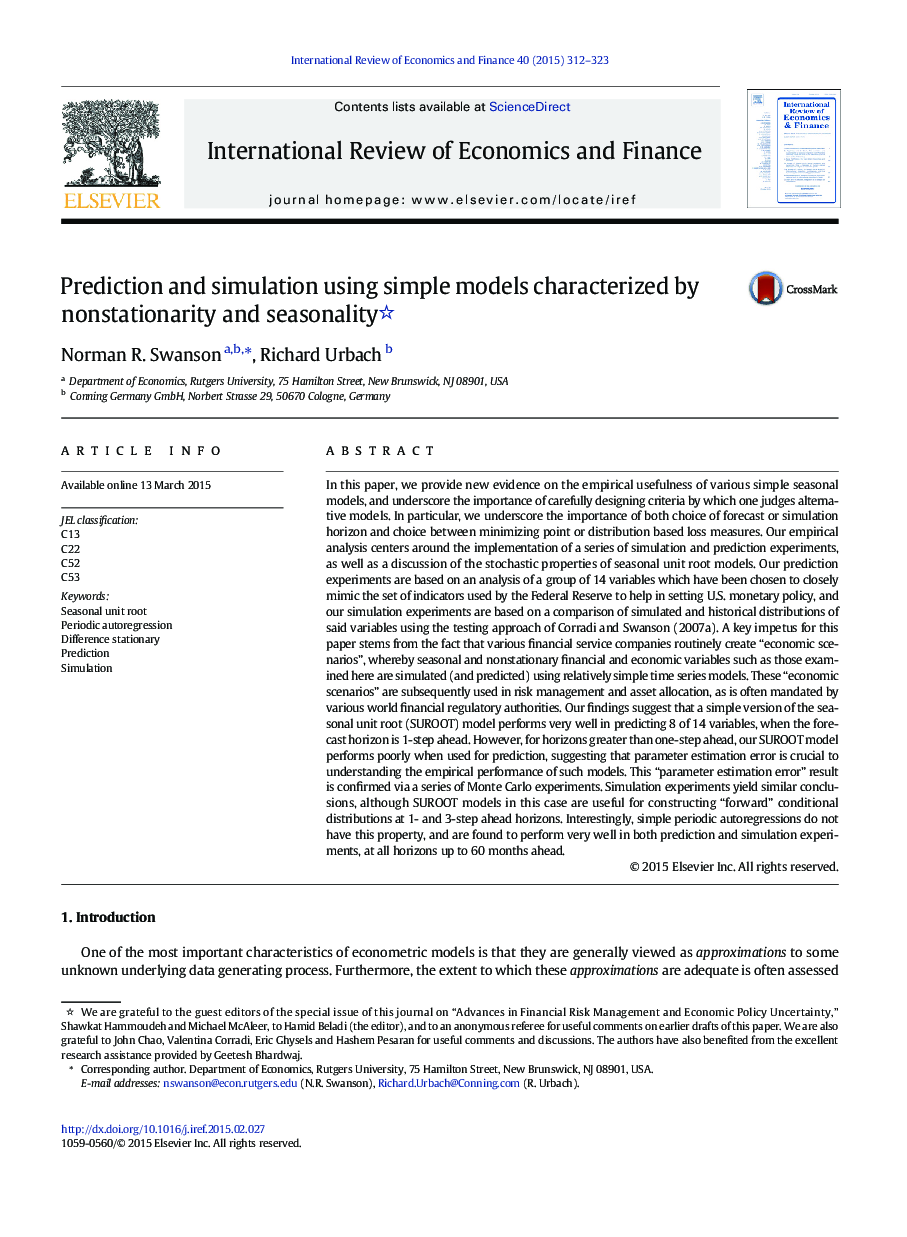| کد مقاله | کد نشریه | سال انتشار | مقاله انگلیسی | نسخه تمام متن |
|---|---|---|---|---|
| 5083392 | 1477802 | 2015 | 12 صفحه PDF | دانلود رایگان |

In this paper, we provide new evidence on the empirical usefulness of various simple seasonal models, and underscore the importance of carefully designing criteria by which one judges alternative models. In particular, we underscore the importance of both choice of forecast or simulation horizon and choice between minimizing point or distribution based loss measures. Our empirical analysis centers around the implementation of a series of simulation and prediction experiments, as well as a discussion of the stochastic properties of seasonal unit root models. Our prediction experiments are based on an analysis of a group of 14 variables which have been chosen to closely mimic the set of indicators used by the Federal Reserve to help in setting U.S. monetary policy, and our simulation experiments are based on a comparison of simulated and historical distributions of said variables using the testing approach of Corradi and Swanson (2007a). A key impetus for this paper stems from the fact that various financial service companies routinely create “economic scenarios”, whereby seasonal and nonstationary financial and economic variables such as those examined here are simulated (and predicted) using relatively simple time series models. These “economic scenarios” are subsequently used in risk management and asset allocation, as is often mandated by various world financial regulatory authorities. Our findings suggest that a simple version of the seasonal unit root (SUROOT) model performs very well in predicting 8 of 14 variables, when the forecast horizon is 1-step ahead. However, for horizons greater than one-step ahead, our SUROOT model performs poorly when used for prediction, suggesting that parameter estimation error is crucial to understanding the empirical performance of such models. This “parameter estimation error” result is confirmed via a series of Monte Carlo experiments. Simulation experiments yield similar conclusions, although SUROOT models in this case are useful for constructing “forward” conditional distributions at 1- and 3-step ahead horizons. Interestingly, simple periodic autoregressions do not have this property, and are found to perform very well in both prediction and simulation experiments, at all horizons up to 60Â months ahead.
Journal: International Review of Economics & Finance - Volume 40, November 2015, Pages 312-323